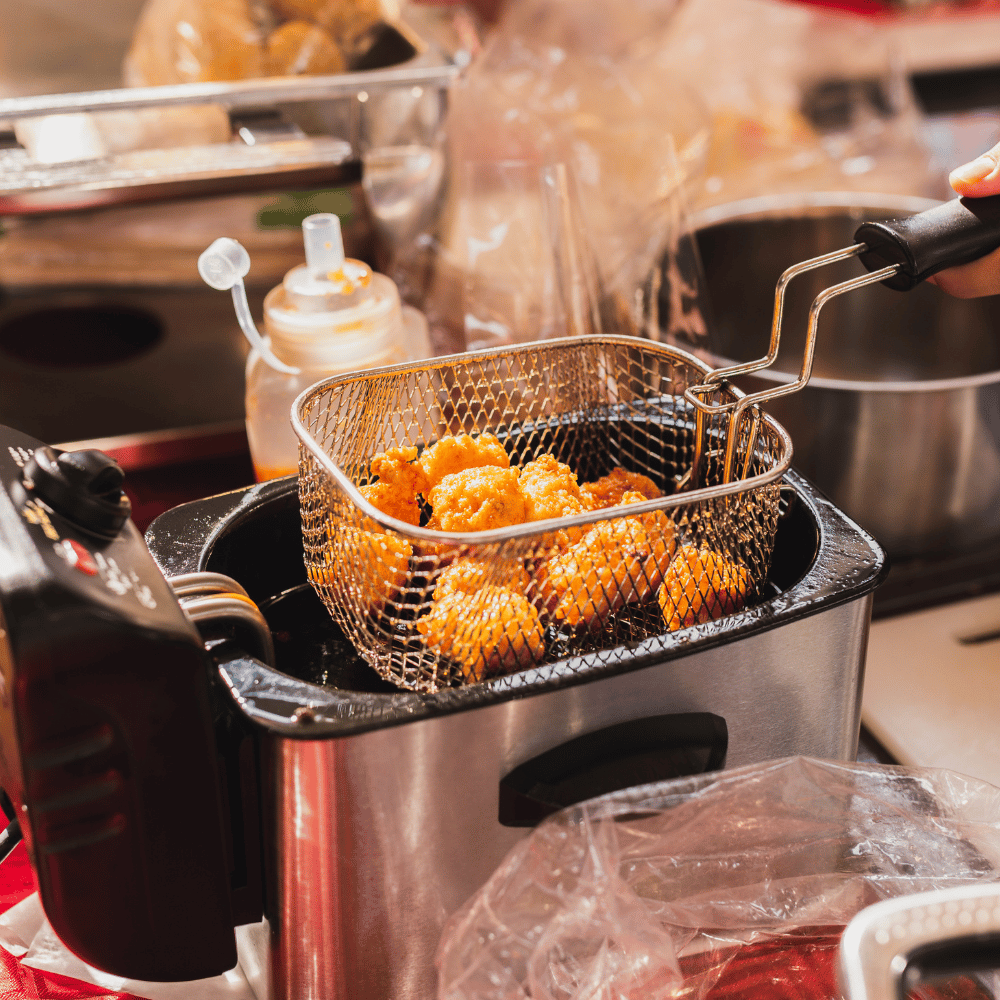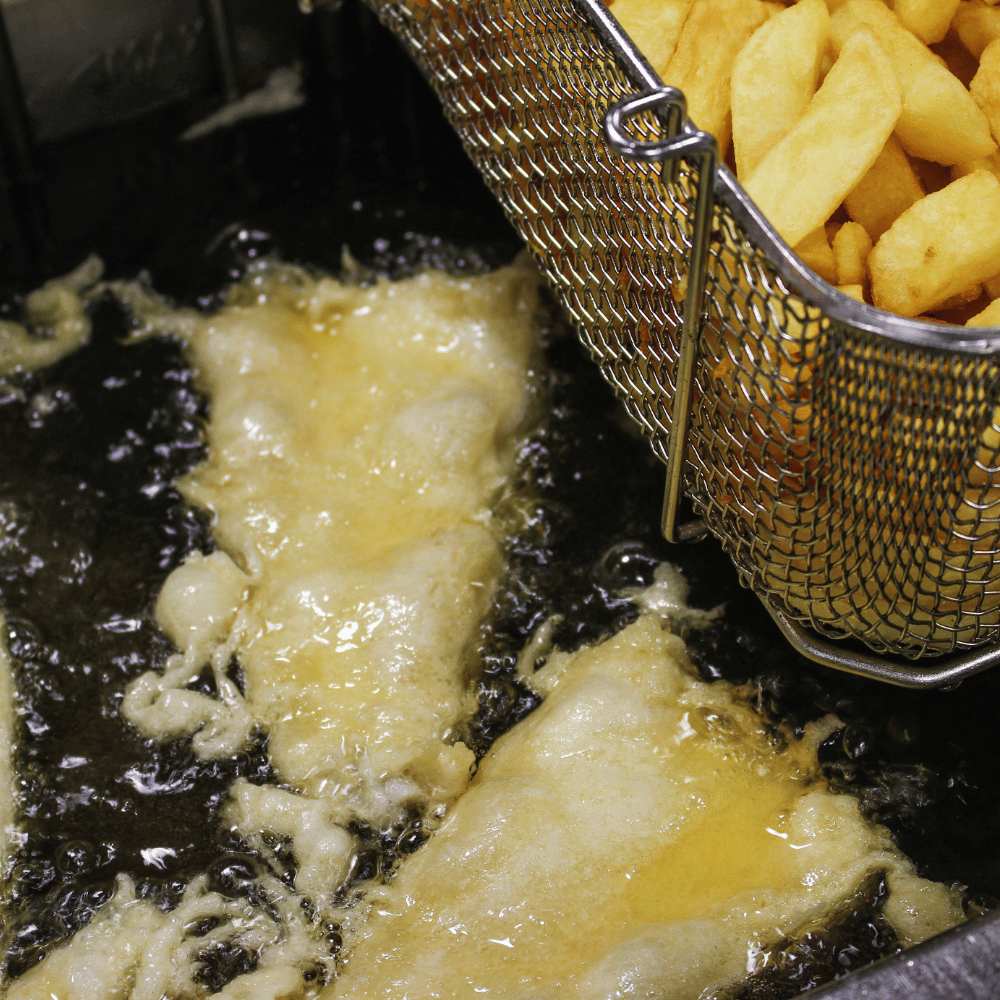Outdoor fish fryers have become a staple for culinary enthusiasts and those who love to entertain. Whether you're hosting a backyard bash or simply enjoying a family meal under the open sky, an outdoor fish fryer can elevate your cooking experience. This comprehensive guide will delve into everything you need to know about outdoor fish fryers, from types and features to maintenance and safety tips.
Key Takeaways:
- Understand the different types of outdoor fish fryers and their specific uses.
- Learn about the essential features to look for when purchasing an outdoor fish fryer.
- Gain insights into the proper maintenance and safety precautions necessary for optimal use.
Understanding Outdoor Fish Fryers
Outdoor fish fryers are specialized cooking appliances designed for frying fish and other foods outside. They typically consist of a large cooking pot, a burner, and a stand or frame that keeps the pot elevated above the flame. These fryers use either propane or natural gas as a fuel power source, providing a high heat output that's ideal for achieving that perfect golden crispiness.
When selecting an outdoor fish fryer, it's crucial to consider the versatility you need. Fryers come in various sizes, accommodating everything from small family meals to large gatherings. The material of the fryer, usually stainless steel or cast iron, also plays a significant role in heat distribution and durability.
Types of Outdoor Fish Fryers
There are several types of outdoor fryers available on the market, each with its own set of advantages. The most common types include the traditional pot and basket fryer, the turkey fryer, which is also suitable for fish, and the more modern, high-capacity deep fryers with multiple baskets.
The pot and basket fryer is a classic choice, perfect for those who prefer simplicity and ease of use. Turkey fryers offer a larger stock capacity and can double as a fish fryer, making them a versatile option. High-capacity fryers are ideal for those who frequently entertain large groups and need to fry multiple batches simultaneously.
Essential Features to Consider
When shopping for an outdoor fish cooker, there are several key features to search for. Temperature control is vital for ensuring your fish is cooked evenly and safely. Look for fryers with adjustable thermostats or regulators. Stability is another important factor; a sturdy base will prevent tipping and accidents.
Additionally, consider how easy it is to clean. The most popular fryers come with detachable parts and drain valves making the cleanup process much simpler. Lastly, portability and weight can be a deciding factor if you plan to take your fryer on camping trips or to tailgate parties. Also of course there is the price, so take your time and look at all your options.

Safety Precautions
Safety should be your top priority when using an outdoor fish fryer. Always set up the fryer on a flat, non-combustible surface, away from any structures or flammable materials. Never leave the fryer unattended while it's in use, and keep children and pets at a safe distance.
It's also essential to follow the manufacturer's instructions for lighting and operating the fryer. Use the appropriate oil with a high smoke point, such as peanut or canola oil, and be cautious not to overfill the pot to prevent oil spillage and potential fires.
Maintenance and Cleaning
Proper maintenance is crucial for extending the life of your outdoor fish fryer and ensuring it remains safe to use. After each use, allow the oil to cool before disposing of it or filtering it for reuse. Clean the pot, basket, lid, and burner with a degreaser and warm soapy water to remove any food particles and oil residue.
Regularly inspect the fryer for any signs of wear or damage, especially the gas hose and connections. Replace any worn parts immediately to prevent gas leaks and other hazards.
Best Practices for Frying Fish Outdoors
To achieve the best results when frying fish outdoors, start by selecting the right type of fish. Firm, white fish like catfish or cod are excellent choices for frying. Ensure the fish is properly cleaned, seasoned, and coated with a batter or breading to protect it from the direct heat and to add flavor and texture.
Heat the oil to the appropriate temperature, typically between 350°F to 375°F, before carefully adding the fish. Fry in small batches to maintain the oil temperature and avoid overcrowding, which can lead to uneven cooking.
Choosing the Right Oil
The choice of oil is crucial for successful fish frying. Oils with high smoke points, such as peanut, canola, or vegetable oil, are ideal because they can withstand the high temperatures required for frying without burning. These oils also impart less flavor to the fish, allowing its natural taste to shine through.
Consider the cost and availability of the oil, as well as any dietary restrictions or allergies, when making your selection. Some oils, like peanut oil, may not be suitable for everyone due to allergies.
Accessories and Add-Ons
Enhance your outdoor fish frying experience with the right accessories. A thermometer is an indispensable tool for monitoring oil temperature. Baskets with detachable handles can make it easier to maneuver the fish in and out of the hot oil safely.
Other useful accessories include a marinade injector for adding flavor to your fish, a fish scaler for preparation, and a cover to protect your fryer from the elements when not in use.

Recipes and Marinades
Experimenting with different recipes and marinades can take your fried fish to the next level. A simple beer batter creates a light, crispy coating, while a buttermilk soak can tenderize and add tanginess to the fish. Spices and herbs, such as paprika, garlic powder, and dill, can be mixed into the batter or breading for extra flavor.
For marinades, consider combinations of citrus juices, soy sauce, and spices. Marinate the fish for a few hours before frying to infuse it with these flavors.
Environmental Considerations
As outdoor cooking gains popularity, it's important to consider the environmental impact of using an outdoor fish fryer. Opt for eco-friendly oils that are sustainably sourced and biodegradable. Be mindful of oil disposal; never pour used oil down the drain or onto the ground. Instead, recycle it properly or take it to a waste disposal facility.
Additionally, choose a fryer model with an efficient burner that minimizes fuel consumption. This not only saves on fuel costs but also reduces your carbon footprint.
Summary
Outdoor fish fryers offer a delightful way to enjoy fried fish and other foods in the comfort of your backyard. By understanding the different types, essential features, and safety precautions, you can select and operate a fryer that meets your needs. Regular maintenance and cleaning, along with the use of proper oils and accessories, will ensure your outdoor fish frying experiences are both successful and enjoyable.
FAQ Section
Q: What is the best type of oil to use in an outdoor fish fryer? A: The best oils for frying fish are those with high smoke points, such as peanut, canola, or vegetable oil. These oils can handle the high temperatures required for frying without burning and have a neutral flavor that won't overpower the fish.
Q: How do I safely dispose of used frying oil? A: Allow the oil to cool completely, then pour it into a sealable container and take it to a local recycling center or waste disposal facility that accepts cooking oil. Do not pour oil down the drain or onto the ground.
Q: Can I reuse oil after frying fish? A: Yes, you can reuse oil after frying fish. Let the oil cool, then strain it through a fine-mesh sieve or cheesecloth to remove any food particles. Store the oil in a clean, airtight container and use it within a short period. However, if the oil smells off or is excessively dark or foamy, it's best to dispose of it and use fresh oil.

